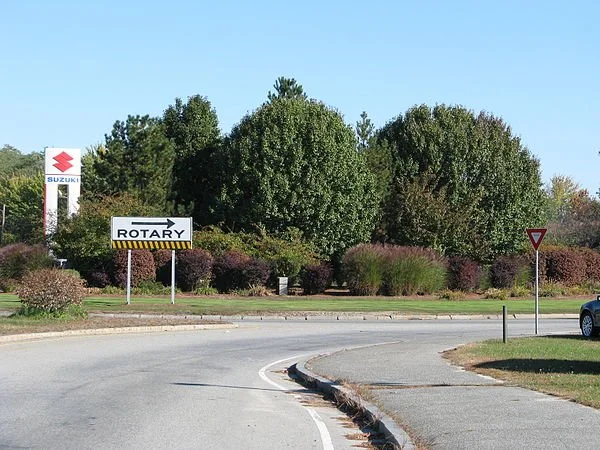Circling makes sense
Rotary sign at a Lowell, Mass., traffic circle. Note the ‘Yield’’ sign.
From Robert Whitcomb’s “Digital Diary,’’ in GoLocal24.com
like too many other commentators on the $1.1 trillion physical-infrastructure law, have too often failed to note three very important things about, in addition, most famously, to the transportation-related stuff: It would help improve water-supply systems, which are dangerously corroded and outdated in many places and strengthen the electric grid and Internet, including their security, which are all too vulnerable to attacks by the Russians, Chinese, North Koreans and other enemies as well as those extortionists just in it for the money.
We need fewer road intersections with lights and more traffic circles, with landscaping in the middle. The latter have fewer accidents, in part because they slow down drivers where they should be slowed down.\
The Federal Highway Administration reports that traffic circles reduce injury and fatal crashes by 78-82 percent compared to conventional intersections. A typical intersection has 32 conflict points, compared to only 8 at a roundabout.
And, as I discovered last week driving up Route 10 in New Hampshire, they can be quite attractive.
Something for states and localities to consider when it comes to spending federal infrastructure money.
